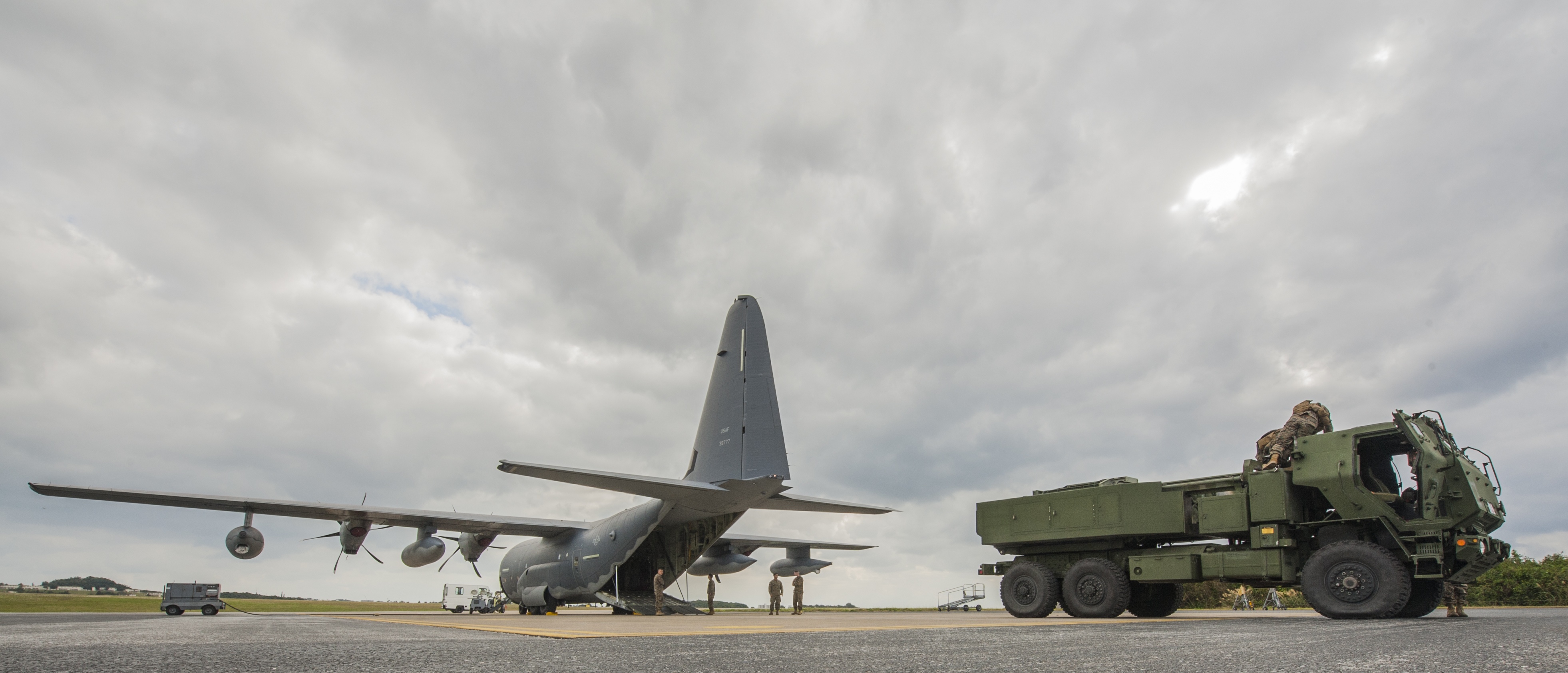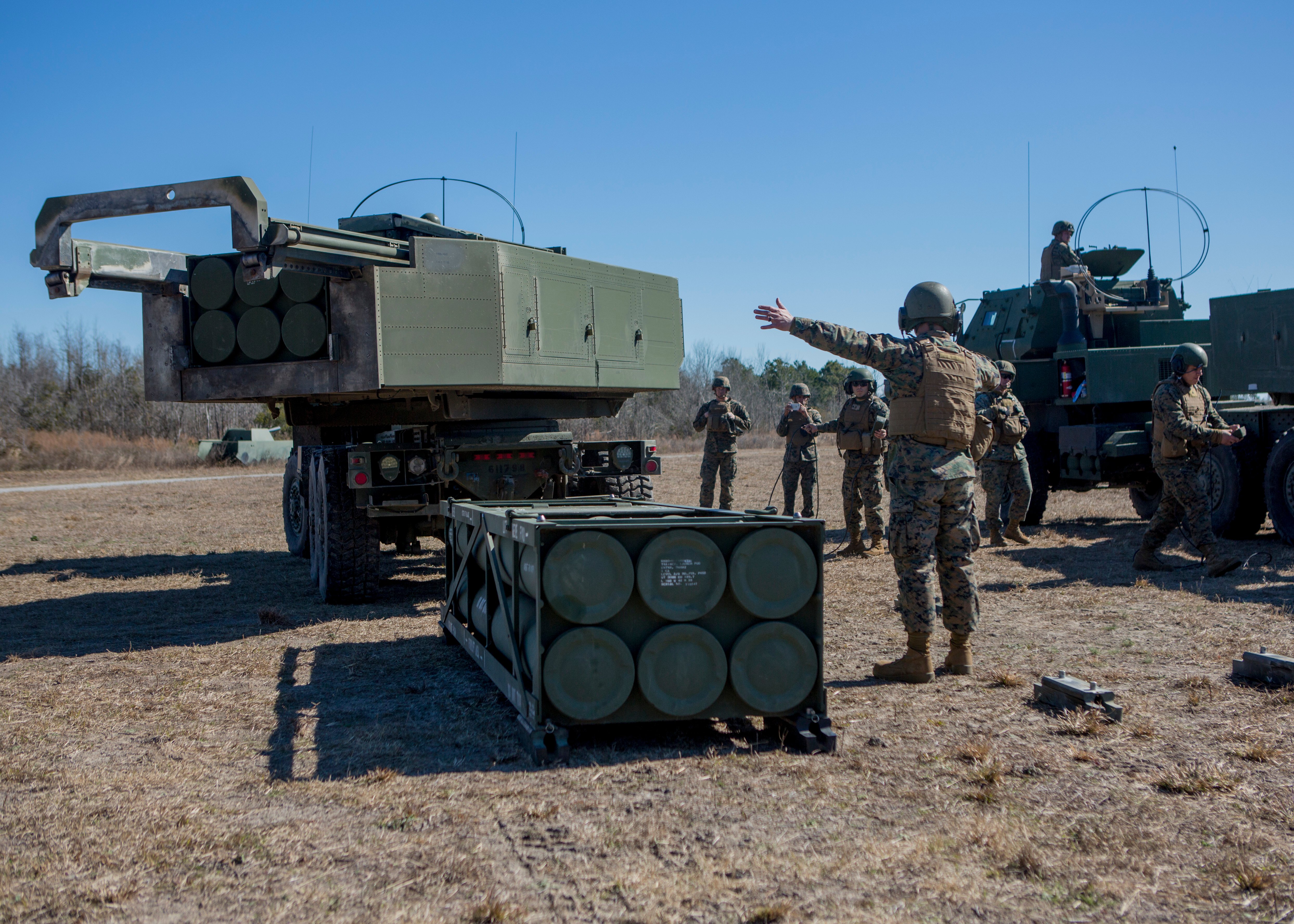
U.S. Pacific Command has plans to put into practice a joint-service concept to integrate air, land and sea operations, with a mandate for all the services to incorporate the concept into their exercises in a lead-up to the Army sinking a ship at next year’s Rim of the Pacific exercise, the PACOM commander said last week.
Adm. Harry Harris said in a May 24 speech at the Land Forces in the Pacific Symposium in Hawaii that it is “critical that we approach implementing the Multi-Domain Battle concept with a sense of urgency” as threats in the Pacific increase. Multi-Domain Battle seeks to bring all the services together – with all their various sensors, weapons and networks – to create cross-domain warfighting capabilities for the combatant commanders to use.
Harris said in his speech that “I’d like to see the Army’s land forces sink a ship, shoot down a missile, and shoot down the aircraft that fired that missile – near simultaneously – in a complex environment where our joint and combined forces are operating in each other’s domains.”
“Simply put, this concept provides us a way to ensure access to the global commons in the run-up to war, and fight in those same commons should war come,” he added.
“The goal to provide joint solutions between sensors and shooters at the tactical level across multiple domains, this is juice worth the squeeze. A forward-deployed ground force can create temporal windows of opportunity to gain superiority in multiple domains that will allow the other components to kill the enemy more effectively.”
While Multi-Domain Battle was not designed to be geography-specific, Harris has a unique problem in PACOM in that the majority of his area of responsibility is covered in water – and 100 percent is covered by air and space, he noted last fall when addressing the concept at the Association of the U.S. Army’s annual meeting and exposition in Washington. With islands and archipelagos and long shorelines to work with and against, and the combination of two top adversaries and five treaty allies in close proximity, Harris can’t allow the Navy to only focus on deep water operations, Marines only the beach, and the Army only inland.
“The end result of my challenge shouldn’t be a simple exercise where we all high five at the end and then head back to the comforts of our services. No, we must incorporate this concept into the way we train year-round. And we all know that tomorrow’s fights are won during today’s training,” Harris said.
“Therefore, we’ll integrate Multi-Domain Battle into command post exercises to check our assumptions. Then we’ll integrate it into our field training exercises that focus on getting our alphabet soup of sensors and shooters talking to one another. Service-specific systems must be able to talk to one another if any of this is going to achieve the effects that we’re looking for. Ideally we’ll get to a point where we see the Joint Force as a network of sensors and shooters allowing the best capability from any single service to provide cross domain fires.”

In his speech, Harris rattled off a number of service-specific Pacific exercises that would begin to test Multi-Domain Battle. By next summer, the beginnings of operational Multi-Domain Battle plans will be ready for the world stage, as “during RIMPAC 2018, [U.S. Army Pacific forces] will fire a Naval Strike Missile from the shore to sink a ship. Our Japanese allies will also fire a shore-based missile during this SINKEX. Folks, RIMPAC 2018 is just a year away. Outcomes like these address some of the tough problems that we face together in archipelagic defense scenarios,” Harris said.
“This is important because the joint force must have faster, longer range, more precise, more lethal, and, importantly, more cost-effective and resource-informed solutions. Not exquisite solutions that break the bank.”
Harris praised the Marine Corps for its efforts to cost-effectively develop and field tools for this type of joint cross-domain warfighting environment, noting that “Headquarters Marine Corps and [Marine Corps Forces Pacific] are working to deploy HIMARS (M142 High Mobility Artillery Rocket System) rapidly aboard ships to shoot at other ships. The Commandant’s Warfighting Lab is working overtime with industry to come up with new ways to employ technologies that allow the Marines to operate across domains more effectively,” he said, referring to the recent Ship-to-Shore Maneuver Exploration and Experimentation Advanced Naval Technological Exercise 2017 in California.

The Marine Corps has the benefit of already having some, but not all, systems interoperable with the Navy. The Army has quite a bit of work to do before reaching Harris’ ideal scenario, which he outlined in his speech: “For example, while on patrol in 2007 USS Chafee (DDG-90) received a call for fires from some special operators on mission in Somalia. After some higher echelon coordination, Team Chafee answered that call with accurate and lethal five-inch rounds, hot metal on target. But naval gunfire support is in the Navy’s DNA, so that really isn’t something new. So let’s flip the script. Imagine, if you will, a less capable ship coming under attack in an area of the world where our land forces are within range to help out. Imagine if some of those ground-based artillery batteries could take out that attacker because it’s the best weapon in the best place to do so.”
“Imagine a future battlespace where maybe the best ordnance for a specific target held by a Navy sensor could come from an Army shooter. Or maybe it’s the reverse,” he summed up.
To get started towards that vision, U.S. Army Pacific (USARPAC) has already created a Multi-Domain Task Force that will become an operational unit that specializes in air, sea, space, and cyber domains, as well as land operations, and can be employed by Harris as needed. But that unit, and the Army as a whole, will have to begin to address five types of challenges: hardware challenges, software challenges, connectivity challenges, procedural challenges, and training challenges,” USARPAC spokesman Col. Christopher Garver told USNI News.
“For hardware, we not only have to look at actual weapon systems, we also have to figure out how to move them around the battlefield and logistically support them. For software, we need to adapt existing or develop fire control software to control the weapon system,” he said.
“For connectivity challenges, we have to ensure the fire control software can connect to and operate in the joint fire control system and make sure it can receive targeting data from joint sensors. For procedural challenges, we have to develop tactics, techniques, and procedures to integrate the weapon system into ground force operations. And finally, we have to train our soldiers on all these challenges so they can accomplish the mission.”





